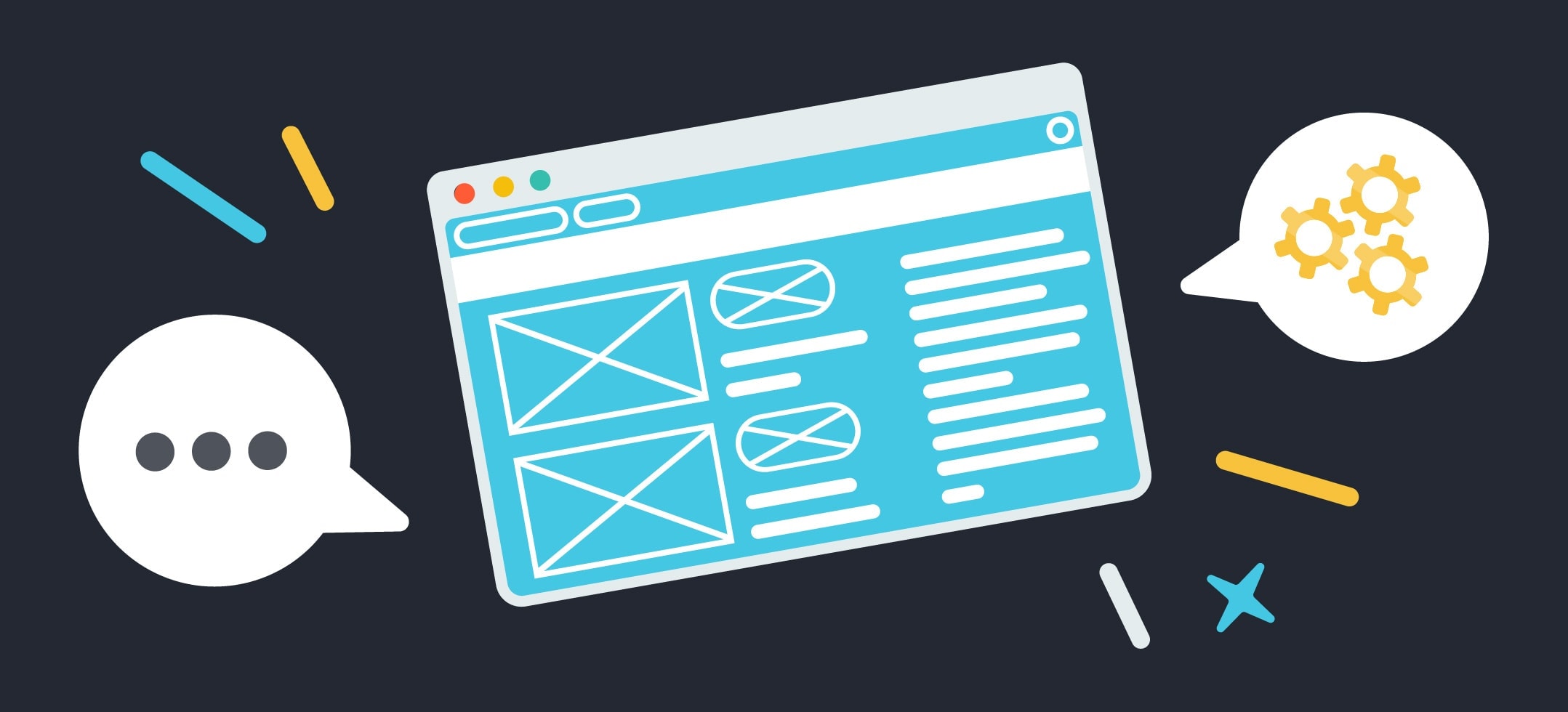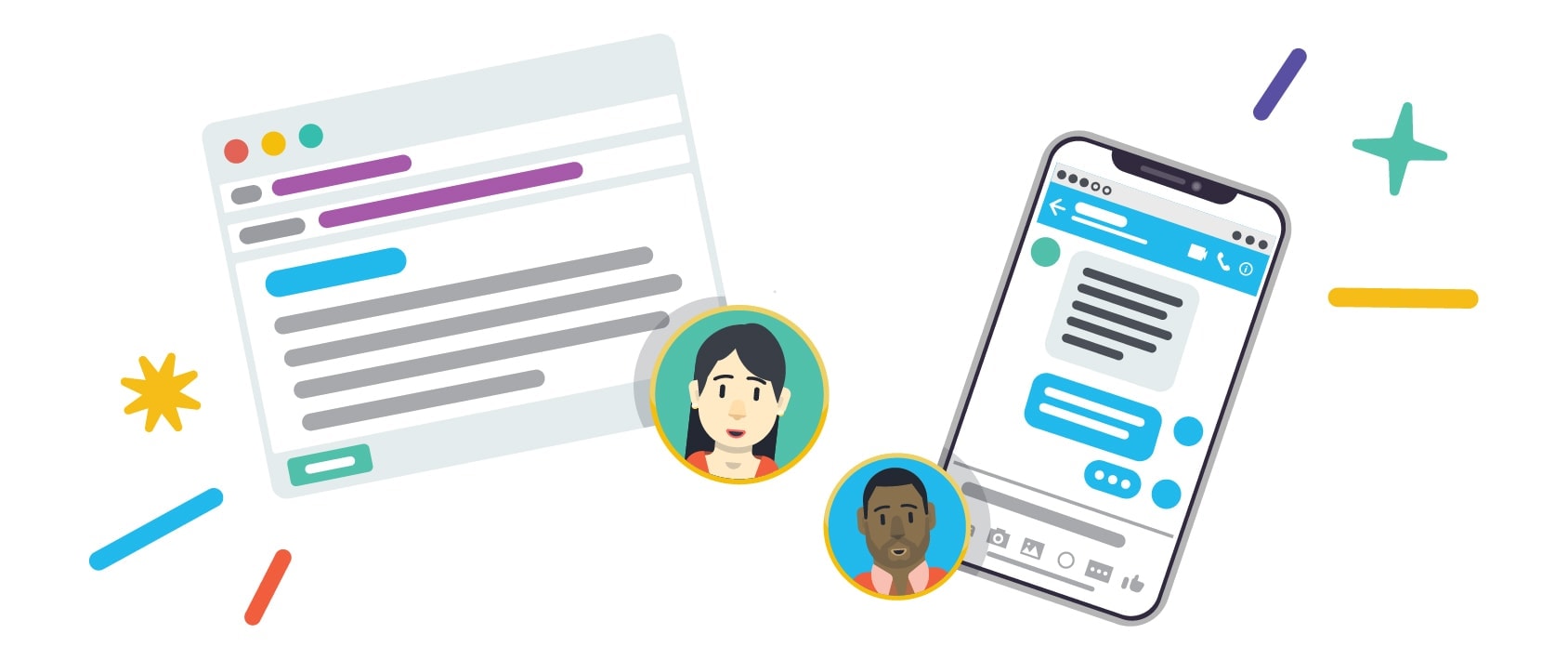
How to Provide Insanely Good Customer Service as an Online Business
As an online business, you don’t have the same types of customer contact points that brick-and-mortar stores do.
So, this begs the question: How do you cultivate a strong relationship with your customers?
The answer: With killer customer service.
The stats speak for themselves:
- The average US shopper pays 17% more to do business with a brand that has an excellent customer service reputation
- As many as 52% of consumers make an additional purchase from a company after receiving a positive customer service experience
- Companies providing exceptional customer experience boast a revenue of 4% to 8% higher than those who don’t
So, we’re diving into a few ways that you, as an online business, can start providing insanely good customer service.
Let’s dive straight in!
Customer Service Tip #1: Be Available in the Ways Customers Want to Reach You

If you’re not already running a multichannel customer service strategy, we suggest making a change.
One of the easiest ways to enhance any customer support strategy is to provide shoppers with their preferred choice of customer support method. This is something you can upgrade today.
The following are a few options worth considering.
Option #1: Telephone
The fact is that as many as 48% of shoppers want to use the phone to contact companies, so it’s a great idea to provide shoppers with a customer support helpline.
However, this method needs careful management. Your phones must be adequately staffed, and your agents have to be knowledgeable, experienced, and personable. After all, the last thing you want to do is route customers through a labyrinthine of automated systems or pass callers from one customer service representative to another in an unorganized way. This is a surefire way to leave your customers feeling more annoyed than they were when they first called in which is obviously not what you want.
So, how do you get telephone support right?
- Make it easy for your customers to find your telephone contact number—don’t hide it on your site
- Make sure you have enough staff ready to answer the phone so customers don’t have to wait too long
- Give your employees the knowledge they need to answer pretty much all customer questions (and give them a quick system to find the answers they don’t know)
- Give your employees the autonomy to fix customer problems (they should know the boundaries of what they can and can’t offer customers to rectify problems)
- Train your employees on how to best communicate with customers (including how to actively listen and de-escalate situations)
You can outsource your telephone support to a call-center or make your own call-center, or you can use an app like OpenPhone to run your business’ customer support line from your personal phone—without using your personal phone number. This is a great option if you’re a small business that isn’t ready to scale your customer service to a call center just yet and can manage incoming calls yourself.
Option #2: Live Chat
Live chat is a useful solution you can use to offer customers speedy responses in real-time, making it the perfect addition to any ecommerce store.
Since a live chat widget is an instant messenger-style service that you can add to your online store, shoppers usually prefer to use it if they want an instant response. As such, it’s primarily used for urgent queries and/or requesting sales advice while shopping (which can help prevent abandoned shopping carts!).
With the right software—like with a helpdesk solution such as Gorgias or Help Scout—you can add live chat to your online store.
Like telephone customer service, live chat customer service needs to be responded to quickly, so you should only make it available if you have the support people available to address queries quickly. There’s basically no point in offering live chat if it’s going to take you email-length response times to get back to your customers. If you can’t respond quickly, then just stick to email.
Option #3: Email
Interestingly, email is the preferred customer service channel for 44% of consumers. One of the best side effects of email support is that most customers don’t expect an instant response, which helps to take some of the pressure off your customer service team.
That being said, if you’re looking to provide the best possible service, you should aim to answer email messages as promptly as possible (usually within 24-48 hours).
Option #4: Social Media
Social media as a customer service platform is a relatively modern trend, which is why now is the time to jump on it to stay ahead of the curve.
Many brands have Twitter or Facebook accounts that are dedicated solely to customer service where they publish updates to keep customers in-the-know about things that might impact their shopping experience, plus, they also answer questions when customers write in.
You don’t have to have completely separate social media accounts to provide customer service, though. You can answer customer questions that come up in your comment sections and DMs, too! Simply give your social media manager(s) the ability to answer customer questions or give your customer service team the ability to jump into your social channels.
Some customer service helpdesks (like Gorgias, Groove, Front, and Freshdesk) actually integrate social media comments and DMs right into your dashboard so your customer service team can respond without having to jump into your social profiles at all.
Customer Service Tip #2: Social Media Listening

There are tons of social listening tools on the market, like Twitter’s advanced search feature or Hootsuite’s Social Media Monitoring. You can use these tools to search specific keywords or phrases (like your brand or product names) to get a list of all the mentions across the platform(s).
As you can imagine, this is a super useful way to get an accurate insight into what the broader public really thinks about your products, brand, and customer experience.
Then, with the information you collect, you can either reach out and thank your customers for their support or let them know that you’ve noted their criticisms and will be taking them into consideration.
Customers really value brand interactions on social media, so social listening is worth its weight in gold. These stats say it all:
- 83% of followers like it when brands respond to the questions they ask on social media
- 68% enjoy it when brands participate in conversations on social media
- 48% of customers purchase from brands that are responsive on social media
So, how can you use social listening to the fullest?
- Use Social Listening to Interact with Your Audience: Using social listening tools, you can reach people who may not be on your radar; as in, people who haven’t even purchased from you yet. These people might not have purchased, but they might already be talking about you online. Use social listening as a way to develop a relationship with them before they’re even a customer.
- Use Social Listening to Add Value: Use your responses as ways to add more value to your audience’s lives. Give them more tips, ideas, insight, or help than they may be able to get elsewhere.
- Use Social Listening to Boost Retention: Since you can access people who are talking about your brand but might not be customers yet—use that to your advantage! Reply to people who have questions about your products or the purchase process so you can get them to convert.
- Use Social Listening as an Extension of Your Brand: You have the opportunity to maintain your brand voice in your responses, so use it. Stay on-brand when you’re following up with your audience on social media platforms and use it as a way to reinforce your brand values.
- Use Social Listening to Put Out Fires: Negative comments, disgruntled customers, judgmental people—everything’s possible online. If you come across less-than-favorable opinions, statements, or reviews when conducting social listening then take the opportunity to nip it in the bud and put out any fires. Take note of any helpful constructive criticisms and do your best to politely handle the rest.
- Use Social Listening to Find New FAQs: If you find any recurring questions or misunderstandings pop up, take note of them and add them to your store’s FAQ section! If you find a few people that are unclear about something then there are likely more, so it’s a sign that you need to address it.
Customer Service Tip #3: Respond to Comments & Direct Messages

If you’re not already, we suggest that you start responding to each and every comment and direct message (DM) you get on social media. Failure to respond to these kinds of customer interactions signals to your audience that you’re not listening or willing to help them.
If you’re new to responding to comments and DMs, or you want more tips on how to upgrade your social media customer service game, then keep reading.
Step #1: Build a Rapport
As you go about answering your social media comments, ensure that your brand’s personality shines through in your responses. You must be approachable and friendly, as this is crucial to building a stronger relationship with prospective customers.
Here’s how to get it right:
- Address the customer using their first name if you can tell what it is from their handle or profile name
- Answer every aspect of their question
- Always customize your response to meet the exact needs of the recipient
- Where appropriate, try to add emojis and GIFs to add an extra spark of personality
Step #2: Keep it Professional
You must maintain a professional front. This doesn’t mean that you have to sound boring or robotic but instead, you need to establish your brand voice and keep it consistent across all of your social profiles.
If you’re managing a team, this may mean developing a style guide for them to follow—that way, everyone knows how to respond to customers uniformly. It’s also worth drafting templates of responses to frequently asked questions or comments so you and your team take a consistent approach.
Step #3: Reply as Promptly as Possible
The quicker you can respond to comments on social media, the better. In fact, it’s no longer considered to be just a nice touch—it’s expected.
As many as 44% of consumers want a response within an hour or less, so if you’re looking for a quick, cost-effective way to make customers feel valued, then providing a speedy response is the way to go. But, don’t be tempted to send off a standard, pre-written template response to every comment—you’ll just sound like a robot. Instead, it’s always best to personalize your responses to help build a rapport and make your brand more personable.
Step #4: Respond to Complaints & Negative Comments
Complaints and/or negative comments aren’t fun to deal with, but unfortunately, they’re inevitable.
Nipping them in the bud to prevent problems from escalating down the road is the best way to handle them.
If you get a complaint come in, do your best to apologize or explain the situation, let the commenter know how you’re going to take action going forward, and tell them what they can expect from you. Taking responsibility for mistakes is important, and you should use this as an opportunity to exceed the customer’s expectations while still managing them in a realistic way.
As far as negative comments are concerned, if there’s been a misunderstanding, simply communicate with the commenter to put the record straight. If they’re just being negative then politely reply, thanking them for their input or simply ignore them. It’s really your brand’s call as to how you interact with and address negativity, so create a plan of action in advance and make sure your team knows what to do.
It’s really your brand’s call as to how you interact with and address negativity, so create a plan of action in advance and make sure your team knows what to do.
For both complaints and negative comments, it’s best to handle them where they happen. So if they come in as a public comment, address them publicly—don’t shift to a private DM. It’s helpful for other users to see the response from your brand, too.
If a comment comes through as a private DM, though, keep it that way. Putting it out into the public eye could make the commenter feel like they’re being put on blast and could make the situation worse.
Customer Service Tip #4: Follow Customers Through the Entire Purchasing Process

Your customers are still your customers even after they’ve made a purchase from you—so don’t forget about them. Instead, keep them on your radar, follow up with them, and continue to provide stellar customer service post-purchase.
After all, it’s six to seven times pricier to score a new customer than to retain an existing one, so holding onto your current customers can make a huge difference to the overall success of your brand.
So, what can you do to keep the post-purchase process flowing smoothly? Try a post-purchase follow-up campaign. These help to nurture customer relationships, improve customer satisfaction, and over time, you should see a boost in sales.
What’s not to love about that?
The following is a 3-step example workflow of an automated post-purchase email campaign.
Step #1: The Order Confirmation Email
First things first, you need to send an order confirmation email immediately after the customer makes their purchase. This is crucial for reassuring them that their transaction successfully went through, but it also gives you an opportunity to touch base with your customer and build on your relationship with them.
These are some additional things you can include in your order confirmation emails to keep the post-purchase process running smoothly:
- Thank Them: Always start by thanking your customers. Let them know how valued they are and how honored you are that they chose to purchase from you. If you’re a small business, let them know that they’re supporting a small business. If you’re a local business, let them know that, too! Ultimately, just make sure that your appreciation for them doesn’t go unnoticed.
- Add FAQs: Provide any set-up or FAQ information that the customer may need to know for their new purchase. This could include assembly videos, unboxing reviews so they know what to expect and can get excited, details for the product’s care instructions, or just a few bullet points to address general FAQs the customer might have.
- Cross-Sell: Where possible, try to cross-sell complementary products. List two or three items that other customers have frequently purchased and add “Buy Now” buttons to take your customer directly to those product pages.
- Include Contact Information: Let the customer know how they can reach you if they have any questions or concerns. Make it easy for them to get in touch and let them know that you welcome their feedback at any time.
Step #2: The Product Education Email
Your second email should be a dedicated product education email. Ideally, you should send this one or two days after the customer’s order has been delivered.
This email should provide an overview of how your customer can get the most out of the product they’ve just bought. Depending on the product, you’ll have to judge which kind of content is the most appropriate. For instance, you could include a:
- Step-by-step guide
- A video tutorial
- FAQs
- A downloadable instruction manual
Or whatever makes the most sense for your product. Think outside of the box—surprise and delight your customer and give them as much value as you can.
And, just like your order confirmation email, your product education email is another great opportunity to do some cross-selling, so don’t forget to add that!
Step #3: The Customer Review Request
The third and (mostly) final step in the post-purchase process is to ask customers to review your product (we say “mostly” because really, the post-purchase process is never truly over).
Ideally, you want to send your review request email three to four days after their order is delivered. This gives customers a few days to trial your product and form an opinion about it.
There are plenty of advantages to asking customers to leave a review. Firstly, it lets them know that you care about their opinion and you want to hear what they have to say. You’ll also learn lots about what you’re doing well and, more importantly, where you can improve.
Not only that, but customer reviews make for compelling social proof.
Online shoppers looking to purchase a product often seek out reviews from customers before committing to anything, so when you ask your customers to leave their review, not only are you engaging with current customers but you’re also increasing the likelihood of securing more sales later on down the line. This makes it a win-win scenario!
Customer Service Tip #5: Other Ways to Interact with Customers Throughout the Buying Process

It’s not just automated email workflows that you can use to interact with your audience—there are other things you can do to engage and retain shoppers throughout the buyer’s process.
When You Make a Mistake, Apologize
We’re all human. This means mistakes will happen at some point or another—and your brand won’t be any exception.
But, it isn’t necessarily the mistakes that leave a lasting mark—instead, it’s how you handle them.
When things go wrong, make them right. The first thing to always do is to apologize.
Next, you’ll then need to analyze what went wrong so you can do your utmost to rectify the situation. Perhaps, you could offer a full or partial refund? Maybe a free product or a coupon code could solve the problem? Maybe you need to tweak some of your operational processes to ensure that the same mistake doesn’t happen again?
Either way, whatever you need to do to put things right… Do it.
Show Your Appreciation
Reward customer loyalty. The relationship you have with your audience goes two ways, so when customers demonstrate their dedication, you should always show your appreciation.
Here are a few things you can do:
- Send freebies in their orders
- Email them discount codes
- Waive shipping fees for repeat customers, or for orders over a certain amount
- Give exclusive content, offers, and discounts to your top customers
Are You Ready to Start Offering Insanely Good Customer Service?
Overall, when it comes to providing good customer service, always be realistic about the situation and don’t give customers false hope.
Be honest about what you’re able to do to help your customers and definitely don’t overpromise and underdeliver, as this can just lead to more problems later on down the road. Instead, focus on what you can really do to fix the problem and be transparent with your customers about the action you’ll take to assist them.
Having read this blog post, we hope you now have a few ideas about how to start offering insanely good customer service.
To recap, we suggest doing the following:
- Offering multichannel customer service
- Using social listening tools
- Replying to all your social media comments and DMs
- Interacting with customers the entire way through the buying journey
So, there you have it—our top tips on how to provide the best customer service possible.



